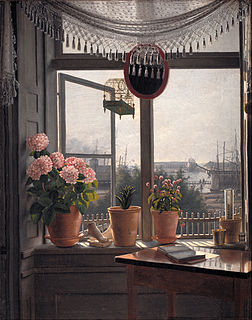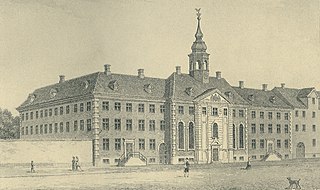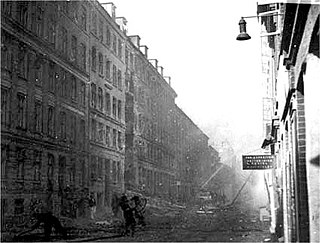 W
WThe history of Copenhagen dates back to the first settlement at the site in the 11th century. From the middle of the 12th century it grew in importance after coming into the possession of Bishop Absalon, and the city was fortified with a stone wall during the 13th century. The harbour and the excellent possibilities for herring fishing contributed to Copenhagen's growth and development into an important trading centre. It was repeatedly attacked by the Hanseatic League as the Germans became aware of its expansion. In 1254, it received its charter as a city under Bishop Jakob Erlandsen.
 W
WView from the Artist's Window is a painting from 1825 by Martinus Rørbye, a Danish Romantic genre, landscape and architecture painter. It is in the Statens Museum for Kunst in Copenhagen. The painting is considered one of the highlights of the Danish Golden Age painting. It incorporates themes and symbols that resonated with its audience.
 W
WThe lord mayor of Copenhagen is the City's mayor and the leader of the Copenhagen Citizens' Representation. Established in 1938, all lord mayors have since belonged to the Social Democratic Party.
 W
WAbsalon's Castle, was a fortification on the island of Slotsholmen in Copenhagen, located at the site of the later Copenhagen Castle and Christiansborg Palace. According to the chronicler Saxo Grammaticus, the castle was founded by Bishop Absalon in 1167 to protect the emerging city of Copenhagen. The castle survived for 200 years before it was destroyed in 1369 by the Hanseatic League, who first occupied and plundered it, and then demolished it completely.
 W
WAlhambra was a large entertainment-complex, built in 1857 in Copenhagen, Denmark.
 W
WBlåtårn was a tower in Copenhagen Castle, the Danish royal family's palace in Copenhagen, Denmark. The tower was used as a dungeon and has been known as such in history. It is not known when the tower was built, but it is known to have existed during the reign of King John I of Denmark. It existed from at least the late 15th century until destroyed in 1731-32.
 W
WCharlottenborg Palace is a large town mansion located on the corner of Kongens Nytorv and Nyhavn in Copenhagen, Denmark. Originally built as a residence for Ulrik Frederik Gyldenløve, it has served as the base of the Royal Danish Academy of Fine Arts since its foundation in 1754. Today it also houses Kunsthal Charlottenborg, an institution for contemporary art, and Danmarks Kunstbibliotek, the Royal Art Library.
 W
WThe coat of arms of Copenhagen was granted on 24 June 1661 by king Frederick III of Denmark in appraisal of Copenhagen's citizen's efforts in repelling the Swedish siege and attack in 1658–1659. An accompanying royal letter of privilege granted the citizens of Copenhagen the same rights to own fixed property as applied to the Danish nobility.
 W
WThe assault on Copenhagen on 11 February 1659 was a major battle during the Second Northern War, taking place during the siege of Copenhagen by the Swedish army.
 W
WCopenhagen Castle was a castle on Slotsholmen in Copenhagen, Denmark. It was built in the late 14th century at the site of the current Christiansborg Palace.
 W
WCopenhagenization is an expression which coined in the early nineteenth century, and has had seen occasional use since. The expression refers to a decisive blow delivered to a potential opponent while being at peace with that nation. It originated from the Royal Navy's bombardment of Copenhagen in 1807, during the Napoleonic Wars. The term is not recorded in either the Merriam-Webster or the Oxford English dictionaries.
 W
WDet Kongelige Vajsenhus is a private primary school in Copenhagen in Denmark. The school has around 300 students and 25 teachers. The school has the right to print Den Danske Salmebog . The school was originally a combined orphanage and school, founded by Frederick IV of Denmark in 1727, and the institution was given a number of priviligies, such as the right to manage a factory and a book printing shop. From 1740, it had the right to print bibles and psalms, and during the 18th-century, it was a center for Pietism in Denmark.
 W
WJarmer's Tower is an old ruined tower in Copenhagen, Denmark. It was once part of the Copenhagen moat. Jarmers Tower represents the remains of the original eleven towers which were once joined together as a part of the city’s medieval fortification.
 W
WKongens Klub was a gentlemen's club founded in 1776 in Copenhagen, Denmark. The club was until the late 1840s based in the Karel van Mander House at Østergade 15. It existed until 1877 when it was merged with Det forenede borgerlige Selskab under the name Kjøbenhavns Klub.
 W
WThe Museum of Copenhagen is the official museum of Copenhagen, Denmark, documenting the city's history from the 12th century to the present.
 W
WNew Copenhagen or St. Ann's Town was a 17th-century expansion of fortified Copenhagen, Denmark.
 W
WOperation Carthage, on 21 March 1945, was a British air raid on Copenhagen, Denmark during the Second World War which caused significant collateral damage. The target of the raid was the Shellhus, used as Gestapo headquarters in the city centre. It was used for the storage of dossiers and the torture of Danish citizens during interrogations. The Danish Resistance had long asked the British to conduct a raid against the site. The building was destroyed, 18 prisoners were freed and Nazi anti-resistance activities were disrupted. Part of the raid was mistakenly directed against a nearby school; the raid caused 125 civilian deaths. A similar raid against the Gestapo headquarters in Aarhus, on 31 October 1944, had succeeded.
 W
WOrlogsværftet was a Danish naval shipyard under the Royal Danish Navy. Before 1924, it was an integral part of the naval base at Holmen in central Copenhagen, Denmark, with an independent management from 1692 when Olaus Judichær became the first factory director.
 W
WThe Royal Copenhagen Shooting Society was founded some time before 1443 in Copenhagen, Denmark. Originally it served to train citizens to contribute to the defence of the city but by the 18th century its activities were of a purely ceremonial and social nature. Today it is based at the Sølyst estate north of the city.
 W
WTivoli, also known as Tivoli Gardens, is an amusement park and pleasure garden in Copenhagen, Denmark. The park opened on 15 August 1843 and is the third-oldest operating amusement park in the world, after Dyrehavsbakken in nearby Klampenborg, also in Denmark, and Wurstelprater in Vienna.
 W
WThe 2009 United Nations Climate Change Conference, commonly known as the Copenhagen Summit, was held at the Bella Center in Copenhagen, Denmark, between 7 and 18 December. The conference included the 15th Conference of the Parties to the United Nations Framework Convention on Climate Change (UNFCCC) and the 5th Meeting of the Parties to the Kyoto Protocol. According to the Bali Road Map, a framework for climate change mitigation beyond 2012 was to be agreed there.
 W
WWilders Plads is a waterfront area located just north of Wilders Kanal, a branch of Christianshavns Kanal, in the north-western corner of the Christianshavn neighbourhood of Copenhagen, Denmark. The area is bounded by Christianshavn Canal to the east and Krøyers Plads to the north.
 W
WThe Women's Prison at Christianshavn in Copenhagen, Denmark, was a correctional facility which existed under various names from the mid 17th century until 1921. From 1870 it served as a women's prison. Earlier names included Børnehuset and Tugt- og Rasphuset. Its last building, which dated from 1861, was torn down in 1928 to make way for an expansion of Torvegade.